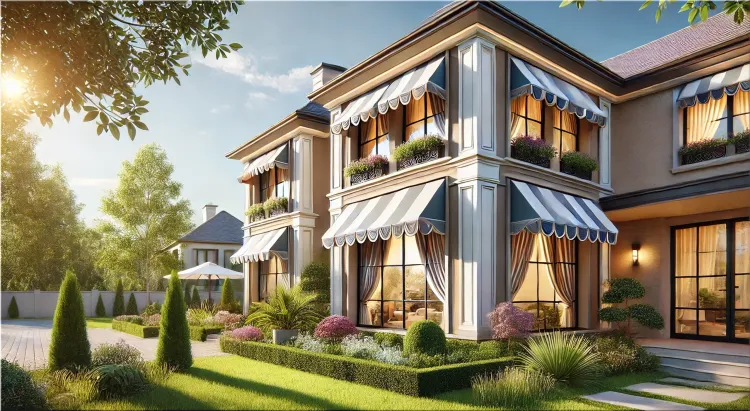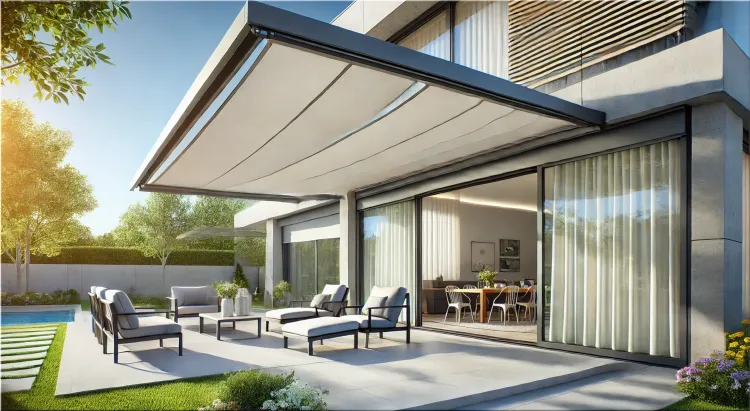Choosing the Right Outdoor Awning for Your Home
Table of Contents
- Introduction to Outdoor Awnings
- Benefits of Installing Awnings
- Types of Awnings for Homes
- Factors to Consider Before Purchase
- Awnings and Climate Considerations
- Tips for Maintenance and Longevity
- Potential Challenges and Solutions
- Conclusion
Introduction to Outdoor Awnings
Outdoor awnings provide a charming and practical solution for homeowners looking to enhance their property's exterior while reaping additional benefits. These structures have been woven into architectural history, evolving from basic fabric covers used for sunshades to sophisticated models equipped with advanced materials and mechanisms. Awnings not only add an element of style but also provide essential functions such as shading windows, doors, and patios from harsh weather conditions. In today's market, there is a diverse selection of awnings designed to cater to various aesthetic tastes and practical needs, making them a popular choice for enhancing residential settings.
Benefits of Installing Awnings
Choosing the right type of awning depends on individual preferences and functional needs. Homeowners can opt between fixed and retractable awning models. Fixed awnings, as the name implies, are permanent structures that are ideal for providing consistent shade over windows or entryways. Window awnings, specifically, are designed to offer protection for windows, keeping the interior cooler and reducing glare. They are generally more robust and require less maintenance once installed. On the other hand, retractable awnings offer flexibility and control, enabling homeowners to extend or retract the awning as desired. This feature is particularly beneficial in volatile weather conditions or when wanting to maximize sunlight exposure during colder seasons. The material of the awning also plays a critical role; from robust aluminum to classic canvas and contemporary acrylic, each type offers unique advantages, including durability, ease of maintenance, and aesthetics.
Types of Awnings for Homes
Choosing the right type of awning depends on individual preferences and functional needs. Homeowners can opt between fixed and retractable awning models. Fixed awnings, as the name implies, are permanent structures that are ideal for providing consistent shade over windows or entryways. They are generally more robust and require less maintenance once installed. On the other hand, retractable awnings offer flexibility and control, enabling homeowners to extend or retract the awning as desired. This feature is particularly beneficial in volatile weather conditions or when wanting to maximize sunlight exposure during colder seasons. The material of the awning also plays a critical role; from robust aluminum to classic canvas and contemporary acrylic, each type offers unique advantages, including durability, ease of maintenance, and aesthetics.
Factors to Consider Before Purchase
Prior to purchasing an awning, there's a range of factors that homeowners should evaluate to ensure the best fit for their needs. First, understanding the spatial requirements is crucial; this involves measuring the area accurately to ensure the awning will cover the desired space without overwhelming it. Financial considerations are vital, as awnings vary in price based on construction materials, size, and design complexity. Homeowners should set a realistic budget that encompasses installation, maintenance, and potential repairs. Additionally, the aesthetic value of the awning should not be underestimated. An awning should harmonize with the home's external design, enhancing the overall visual appeal and boosting the property's attractiveness.
Awnings and Climate Considerations
When selecting an awning, considering the local climate is of utmost importance. In regions with high humidity or frequent rainfall, choosing waterproof and durable materials like heavy-duty plastics or treated fabrics is crucial for longevity. Areas subjected to intense sunlight require awnings crafted from UV-resistant materials, preventing fading and providing superior sun protection. Certain locations might face fluctuating weather patterns; hence, opting for retractable awning systems can offer more adaptability to changing conditions. A well-chosen awning will not only complement the aesthetic of your home but will also withstand environmental challenges, ensuring a lasting addition to your outdoor spaces.
Tips for Maintenance and Longevity
To maximize the life span and functionality of your awning, consistent maintenance is essential. Frequent cleaning with mild soap and water is recommended to remove dust and debris, preventing potential damage over time. During extreme weather, retracting awnings and securing fixed ones can avert possible tears or structural harm. Regular inspections to spot mildew or mold growth can help maintain an awning's appearance and durability. For retractable models, ensuring the smooth operation of mechanical components through periodic checks and lubrication is vital to prevent malfunctions and to keep the system in perfect working condition.
Potential Challenges and Solutions
Like any home feature, awnings might present some challenges over time, such as mildew development or sagging fabric. To tackle these issues head-on, homeowners should ensure proper ventilation around the awning to deter mildew. It's also beneficial to select materials explicitly designed to resist mildew growth. Sagging can often be resolved by tightening the awning or checking and adjusting the tension of the supporting framework. For retractable models, regular maintenance of the mechanical parts will prevent operational issues, making sure the awning remains a functional and attractive part of the home.
Conclusion
In summary, choosing the right outdoor awning involves balancing aesthetic desires with practical needs and environmental considerations. Well-selected awnings enhance the beauty and utility of a home, provide energy savings, and offer increased outdoor comfort. By applying the outlined insights and considerations, homeowners can make informed decisions that optimize the advantages an awning can provide, ensuring a satisfying investment in both appearance and function.
- Add new comment
- 30 views























